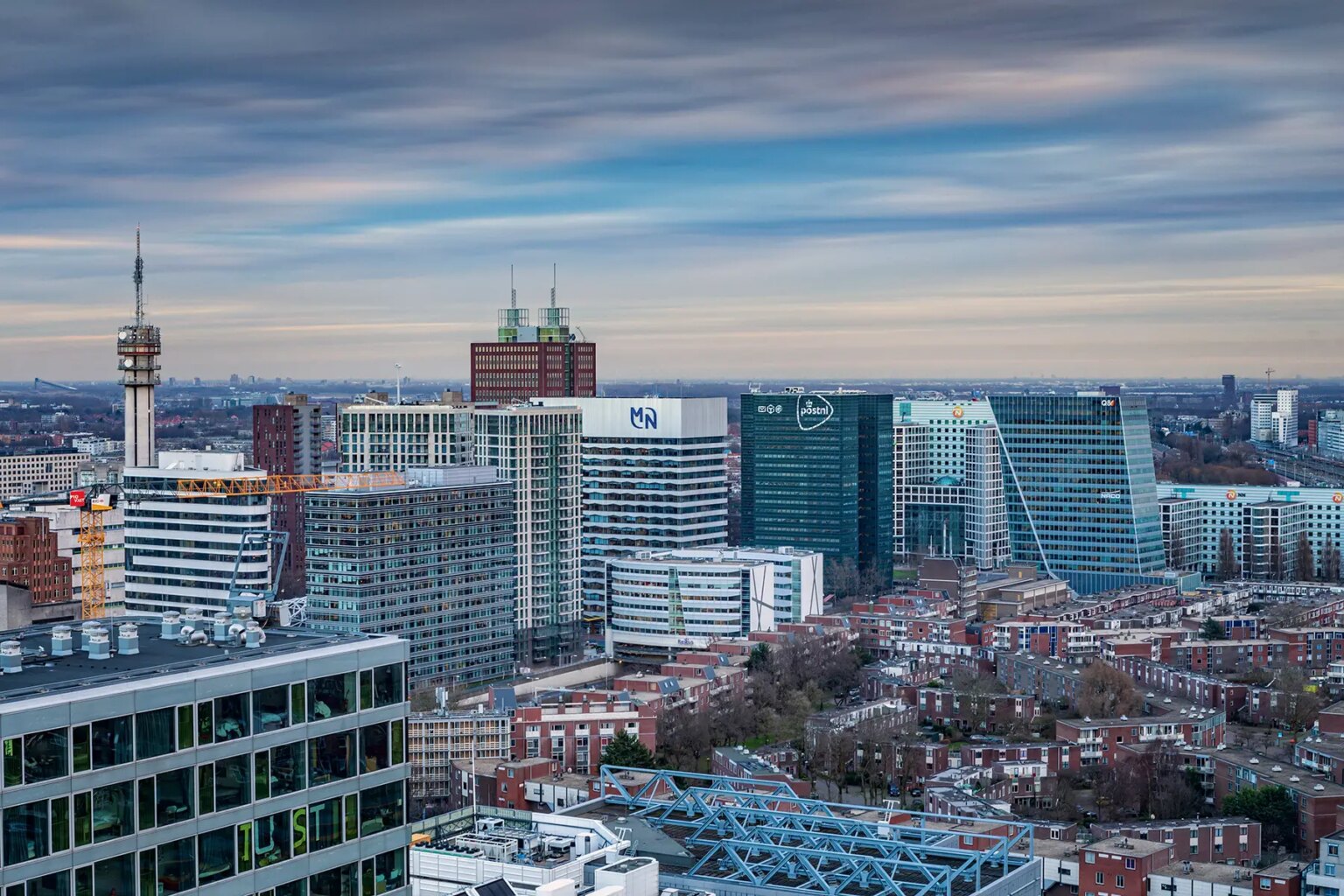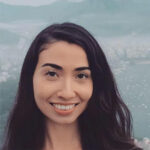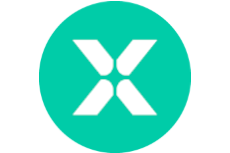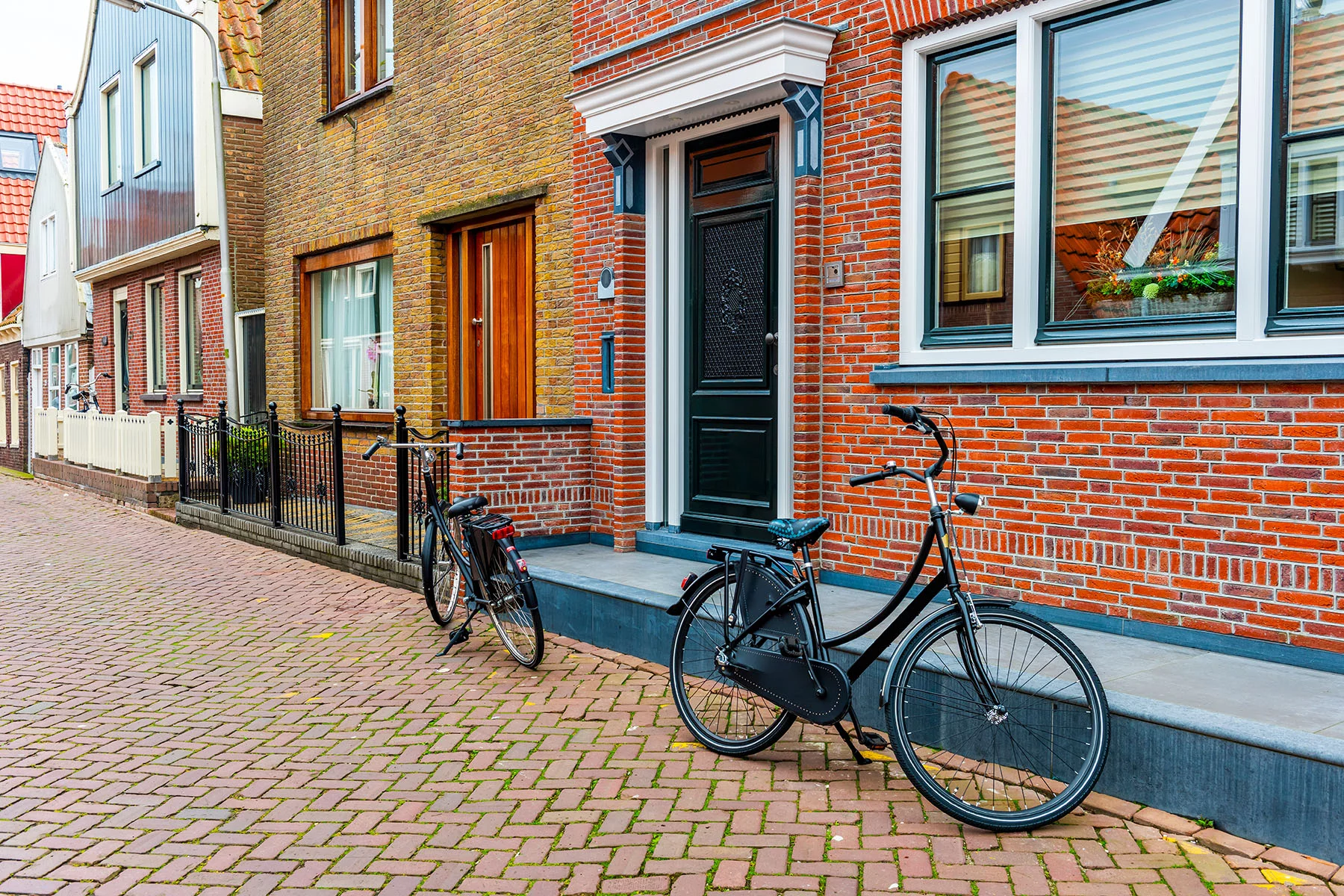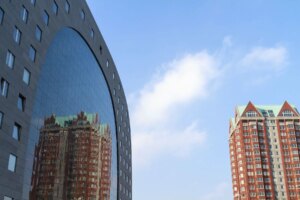It’s no surprise that The Hague attracts such a vibrant global community, given its longstanding status as an international hub for various sectors. Beyond its global recognition as the international city of peace and justice and the political heart of the Netherlands, The Hague is a captivating, multifaceted location whose offerings are as diverse as its residents.
From its historic city center to the bustling seaside and tranquil residential areas, The Hague has something to suit every lifestyle. Learn more about some of the city’s most popular neighborhoods to help you decide where to live in The Hague:
HousingAnywhere
Simplify finding a home abroad with HousingAnywhere. Their easy-to-use platform lets landlords and tenants connect, offering a popular service for anyone moving internationally. So, find your new home when relocating abroad quickly and easily with HousingAnywhere.
An overview of The Hague
Located on the west coast of the Netherlands, The Hague (Den Haag, also officially named ‘s-Gravenhage in Dutch) is the capital of South Holland and the third-largest city in the Netherlands. The Hague played a significant role in Dutch history, serving as the Netherlands’ administrative center since the 13th century. Today, it remains home to the seat of the Dutch government, the Supreme Court (Hoge Raad), and the royal family.

The city is world-renowned for hosting the United Nations’ International Court of Justice and International Criminal Court, along with over a hundred other intergovernmental organizations and foreign embassies. It’s also a thriving economic hub, with many multinational companies and modern startups in the new energy, finance, IT, and cybersecurity industries.
Its vast international opportunities make The Hague a magnet for newcomers from around the world. Around 58% of The Hague’s 560,000 inhabitants have a “migration background” as of 2023, contributing to the city’s unique cosmopolitan atmosphere.
The Hague is a treasure trove of regal landmarks that reflect its rich history, political significance, and royal stature. In the center, modern skyscrapers stand alongside 17th-century buildings. This reflects The Hague’s dynamic present-day character, where tradition and innovation harmoniously coexist. One-third of the city’s total surface area is also green, with dunes, forests, parks, and a sandy beach along its 11-kilometer coastline.
How to find housing in The Hague
Like in many major cities, the housing market in The Hague is known to be competitive and expensive. Having said that, the overall cost of living in The Hague is cheaper than in Amsterdam and Utrecht.
One of the best ways to find housing in The Hague is by searching online on property portals. These websites allow you to contact real estate agencies (makelaars) to learn more about property listings and schedule house viewings. Some of the most popular websites for renting and buying housing in the Netherlands include:
Typical accommodation in The Hague
The Hague offers diverse housing options to suit different budgets and styles, from spacious family homes to compact studios. In terms of architecture, you’ll find everything from traditional centuries-old Dutch townhouses to modern apartment complexes.

Many residential properties in The Hague have been designed with functionality in mind. Apartments usually feature an open-plan living area with one to three bedrooms, depending on their size. Detached family homes (vrijstaand) often have multiple floors, with bedrooms on the upper levels.
Square meterage can vary widely depending on the type of property and its location. Apartments generally range from 35 to 120 square meters, while family homes offer anywhere from 80 to over 200 square meters of living space.
Renting in The Hague
Renting is popular among residents of The Hague, especially those who are new to the city or prefer flexibility. In fact, statistics indicate that over half of the population in The Hague are renters. The high demand for rental properties has led to a diverse market with a range of options to suit different preferences and budgets.
As of the most recent data (August 2023), rental prices for apartments can range from just under €1,000 to over €2,000 per month, while family homes typically range from €1,500 to well over €3,000. Of course, these vary according to factors such as property size, location, and amenities. For instance, the city center and popular areas like Statenkwartier and Scheveningen tend to be more expensive, while neighborhoods such as Schilderswijk or Laakwartier offer more affordable rental options.
Buying in The Hague
If you plan on settling in The Hague long term, you may want to consider purchasing a property. Accommodation in the city center and other popular neighborhoods is in high demand, so you can expect to face competition and pay above the asking price.
Generally speaking, expats are able to easily buy a Dutch property. However, when it comes to getting a mortgage in the Netherlands, many will use a mortgage advisor to help them through the process. This is especially helpful if you don’t speak Dutch and are new to the local housing market. Expat-friendly mortgage advisors operating in The Hague include:
As of the latest data (August 2023), the average price per square meter for a property in The Hague is around €4,400 in the city center and €3,300 outside the city center.
Neighborhoods in The Hague
With eight city districts and 44 diverse neighborhoods, there’s something to suit everyone in The Hague. The town is conveniently compact, making it quick and easy to get from one side of the city to the other by bicycle or with the city’s public transport system operated by HTM.
Centrum
Centrum, or the city center, is the beating heart of The Hague. This district weaves together several areas, including the vibrant Chinatown, historic Hofkwartier, and regal Noordeinde.
Living in the center, all amenities you could need are at your doorstep. Among the essentials, there’s Den Haag Centraal train station, The Hague City Hall (Gemeente Den Haag), and HMC Westeinde, one of the city’s main hospitals.
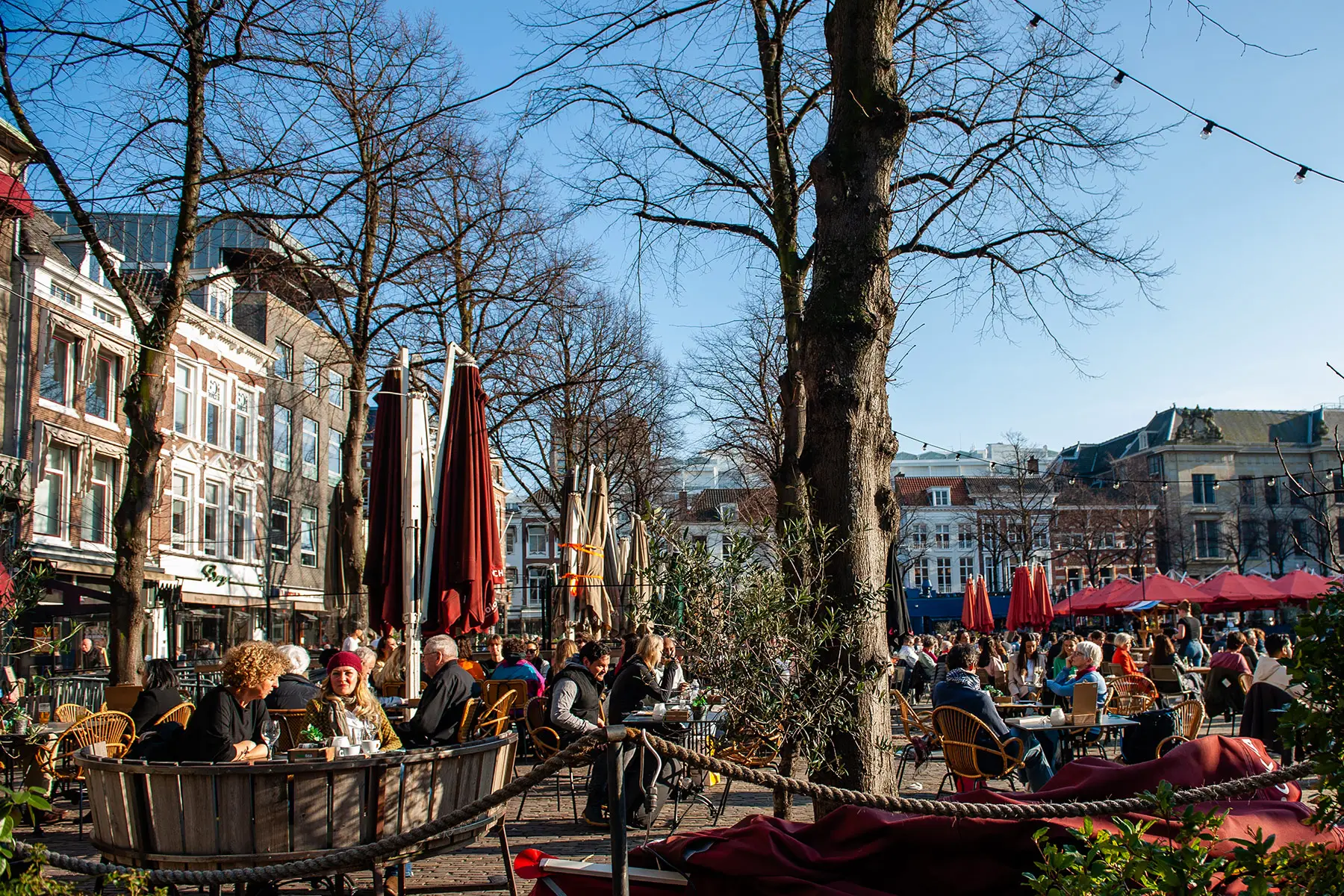
You’ll find most international chain stores on Spuistraat, along with De Bijenkorf department store on Grote Marktstraat. Nearby, the popular De Passage, Haagsche Bluf, Denneweg, Noordeinde, and Hoogstraat streets are lined with trendy fashion boutiques and charming restaurants and cafés.
The Hague’s two main squares, Grote Markt and Plein, are favorite local hangout spots, with many lively bars and restaurants. On weekends, you’ll often find open-air cultural events and concerts here and at the nearby Malieveld park.
Many of The Hague’s most famous landmarks are in the old town center. This includes Het Binnenhof, the Dutch parliament building, and Paleis Noordeinde, one of the Dutch royal family’s official palaces. You can also enjoy world-famous art collections at the Mauritshuis and Escher in Het Paleis museums. The Haagse Bos, the city forest, is a green oasis that’s also walkable from the city center.
Properties in Centrum are inevitably in high demand and expensive. Parking can also be a challenge, as space is limited. Nevertheless, Centrum makes an exciting base for anyone who wants to immerse themselves in The Hague’s rich history and culture.
Bezuidenhout
Bezuidenhout is nestled in the heart of The Hague, just southeast of the Haagse Bos. Its ideal location provides easy access to the city’s amenities while maintaining a sense of tranquility.
Life in Bezuidenhout revolves around Theresiastraat, a popular shopping street with a wide variety of shops, cafés, and restaurants. Around this street, you’ll also find the New Babylon shopping center and the Royal Library (Koninklijke Bibliotheek).
Along with several other governmental organizations, The Ministry of Economic Affairs (Ministerie van Economische Zaken) and the House of Representatives (Tweede Kamer der Staten-Generaal) are based in the area. The Beatrixkwartier, a modern financial district in Bezuidenhout, also hosts many large multinational companies and the World Trade Center The Hague Business Center.
One of the biggest advantages of living in Bezuidenhout is being right next to the serene Haagse Bos. The neighborhood also has plenty of local playgrounds, schools, and kindergartens, making it a great location for families with children.
For commuters, Bezuidenhout is conveniently very close to Den Haag Centraal and Den Haag Lan Van NOI train stations. If you need to get around by car, the A12 motorway is just around the corner.
Bezuidenhout is a highly sought-after neighborhood for those who want to live in a residential area while being right next to the center, so you can expect property prices to reflect its desirability.
Benoordenhout
Benoordenhout is a stately, leafy neighborhood located east of The Hague’s city center. This popular district is known for its beautiful architecture, charming ambiance, and easy access to green spaces. The Haagse Bos, Clingendael, Oosterbeek, and Oostduin parks are in the area, while the beach is just a short cycle away.
Residents of Benoordenhout enjoy a high quality of life, with a wide variety of amenities within easy reach. You’ll find plenty of cozy cafés, gourmet restaurants, and boutique shops on Van Hoytemastraat, Weissenbruchstraat, and Willem Royaardsplein. Expats can also take advantage of the International Health Centre The Hague, which offers a full range of healthcare services for the international community.
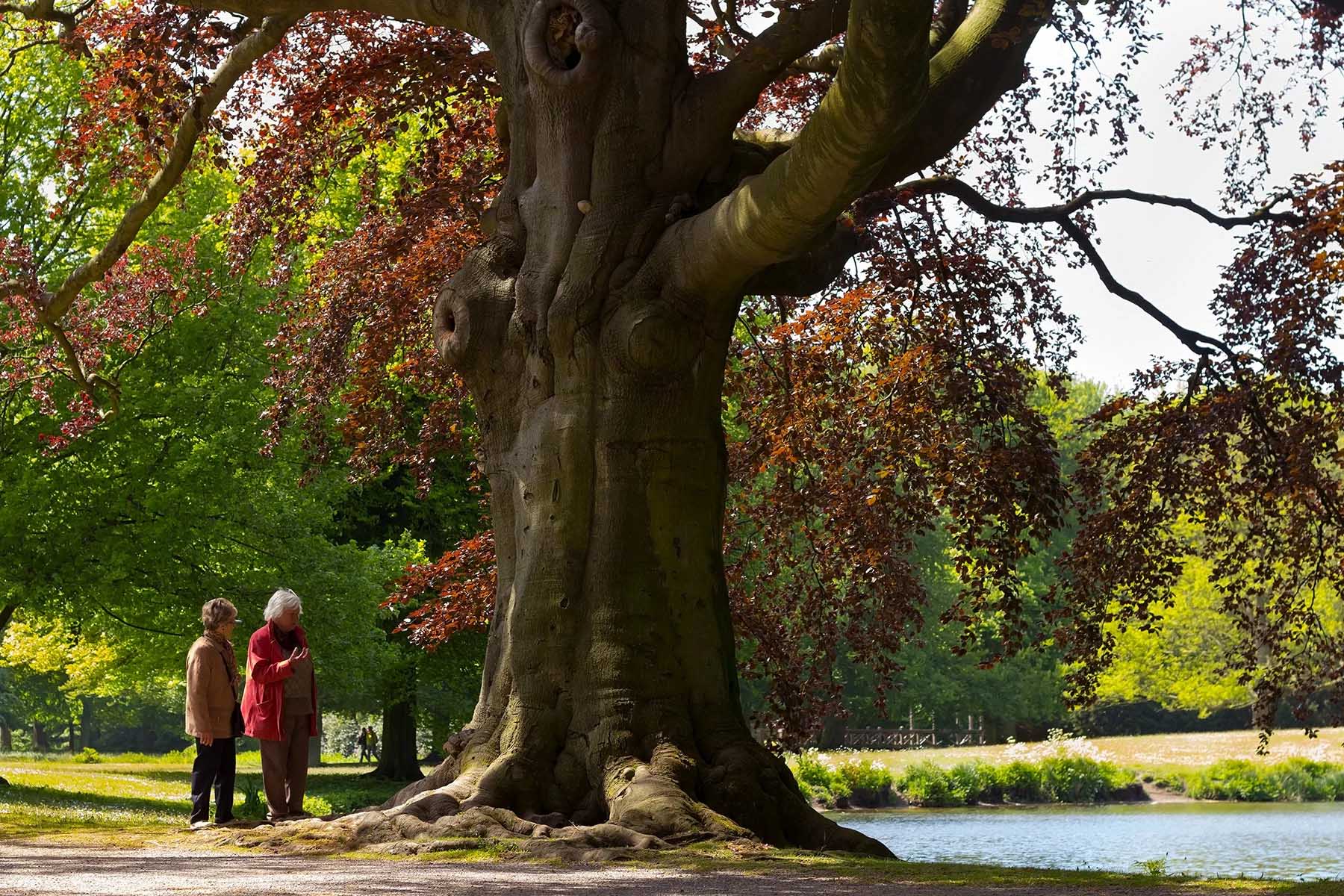
The neighborhood’s proximity to international organizations and schools draws many expats and families with children to the area. As well as several embassies, the International Criminal Court (ICC), and the Royal Dutch Shell headquarters are based in the area.
If you’re seeking a peaceful and luxurious lifestyle with a strong international community, Benoordenhout could be the place for you.
Archipelbuurt
Archipelbuurt is an elegant neighborhood in the northern part of the city center, known for its wide avenues and Neo-Renaissance architecture. It conveniently sits between the city center and Scheveningen Beach, offering residents the best of The Hague’s unique character.
The neighborhood offers a wide array of shopping and culinary delights on Bankastraat and Javastraat. The popular Frederikstraat and Denneweg shopping streets are also just a short stroll away.
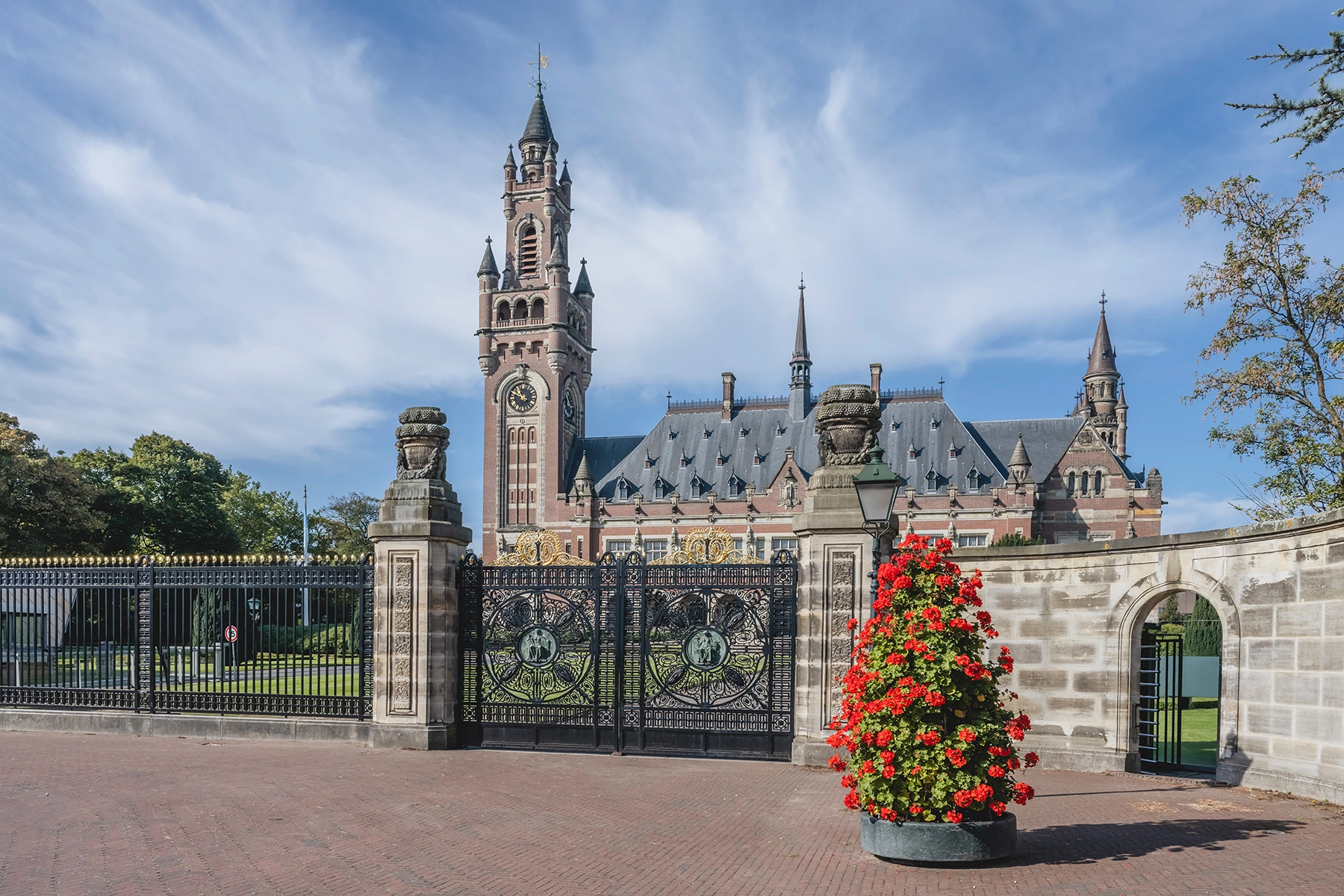
You can reach Den Haag Centraal by bicycle in around 10–15 minutes, and Scheveningen Beach in about 15–20 minutes. Getting around by public transport is just as easy, as Archipelbuurt is very well served by bus and tram lines.
Living in Archipelbuurt, you have the beautiful Scheveningse Bosjes and Park Sorghvliet nearby. The Peace Palace garden is also within walking distance.
Archipelbuurt is a popular area for expats who want to live in a residential yet lively neighborhood near the city center and seaside. Given its desirability, it’s worth noting that its property prices tend to require an above-average income.
Zeeheldenkwartier
Zeeheldenkwartier is a haven for those seeking a creative and bohemian atmosphere in The Hague. Located just west of the city center, Zeeheldenkwartier is known for its lively atmosphere, Art Nouveau architecture, and charming canals.
Zeeheldenkwartier has a distinctive character that attracts artists and creatives from all walks of life. Its amenities cater to its diverse community, with many trendy shops and cafés on Prins Hendrikstraat and Anna Paulownastraat. At the heart of Zeeheldenkwartier lies the renowned Prins Hendrikplein, a lively square and popular gathering place for locals. You can also easily access the city center’s amenities on foot.
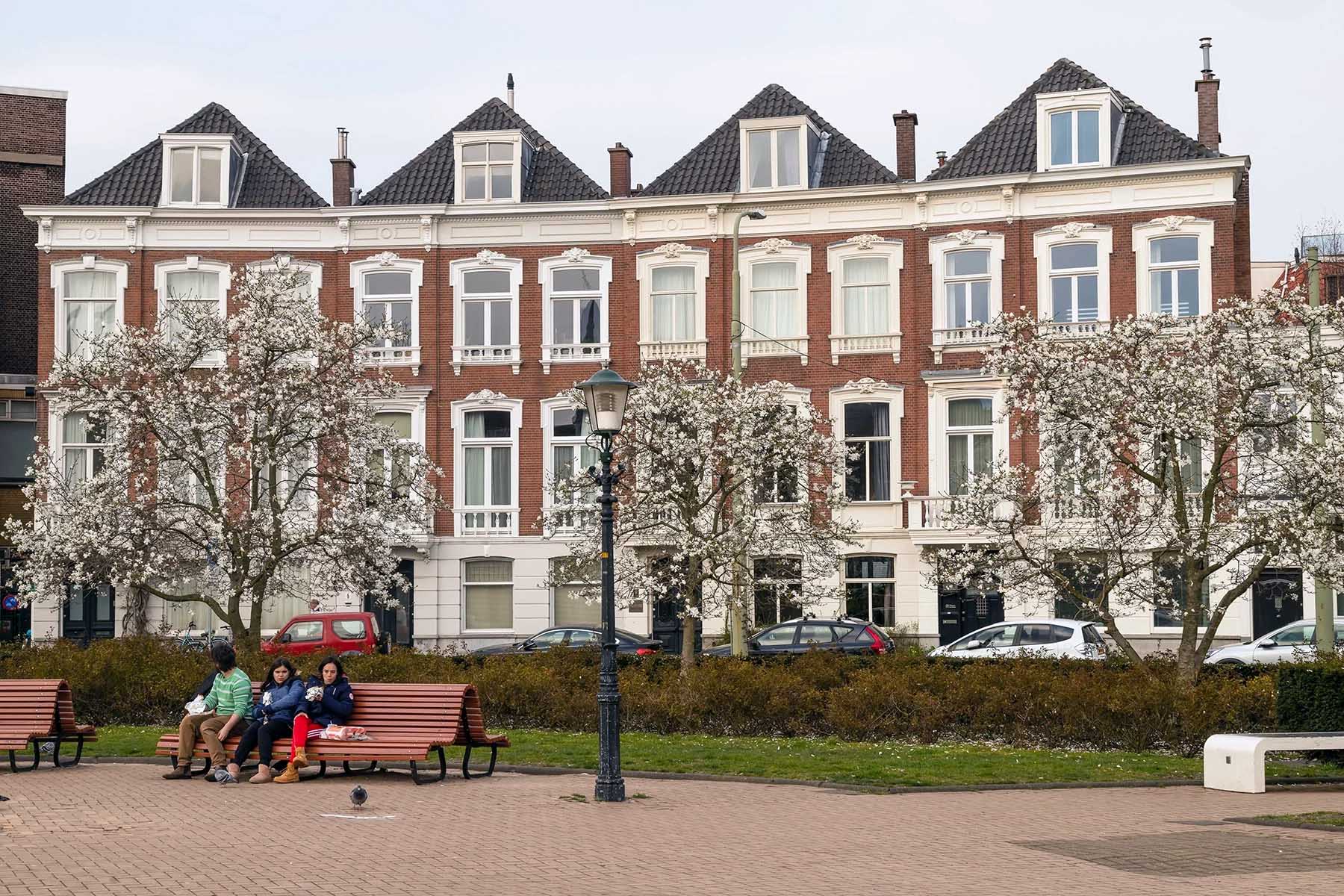
Residents organize markets and events such as the Zeeheldenmarkt and the Zeeheldenfestival, reflecting the area’s vibrant community spirit. The neighborhood is also home to De Zeeheldentuin community garden and is near the serene Paleistuin city garden. Park Sorghvliet and the Scheveningse Bosjes are also just a short distance away.
With a good mix of affordable and luxurious homes, Zeeheldenkwartier is a very popular area among young starters and wealthier expats.
Regentessekwartier
Regentessekwartier is a compact residential neighborhood located west of the city center. With tree-lined avenues, spacious squares, and green areas with playgrounds, it offers a tranquil atmosphere that appeals to many expats.
The neighborhood is home to a variety of local shops and community-driven initiatives, many of which you’ll find on Weimarstraat and Farenheitstraat. The lively Regentesseplein at the heart of the neighborhood also regularly hosts markets and events.
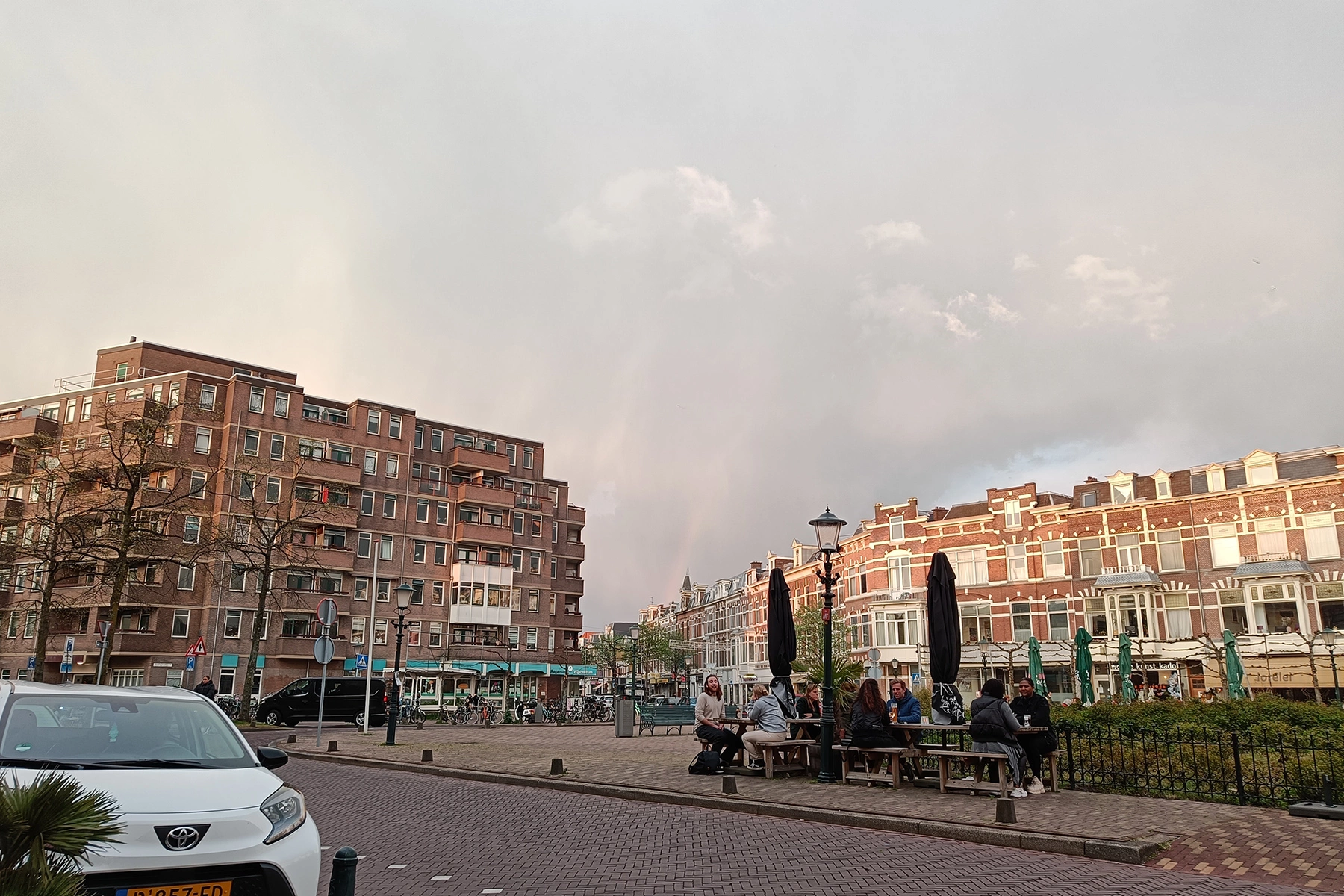
On Galileïstraat, you’ll find the cozy community garden, Emma’s Hof, which often holds small-scale events organized by residents. Sports lovers can enjoy the large sports center and park, De Verademing, which has plenty of open areas for outdoor activities. You’re also just a 10-minute cycle from the beautiful Westduinpark and Scheveningen Beach.
Regentessekwartier is calm yet central while being an affordable alternative to the very popular Zeeheldenkwartier and Archipelbuurt. In addition, the newly developed residential Energiekwartier makes the area even more attractive for families and young professionals, given its convenient amenities and access to public transport.
Statenkwartier
Statenkwartier is a sophisticated international neighborhood near the coast in The Hague. This 19th-century district is renowned for its stately townhouses and mansions, reflecting the neighborhood’s rich history. Beyond its historic streets, there’s plenty of art and culture to admire at the renowned Museon, Kunstmuseum Den Haag, and Fotomuseum Den Haag.
A highlight of the neighborhood is Frederik Hendriklaan, an atmospheric shopping street known as “De Fred.” Here, you’ll find a range of shops, from local fruit and vegetable stalls to supermarkets and trendy boutiques.

Statenkwartier is also close to the International Zone, where many international schools, embassies, and intergovernmental organizations are based. This includes the International Criminal Tribunal for the Former Yugoslavia (ICTY) and Europol.
Feel like enjoying walks in nature and taking in beautiful sea views? In Statenkwartier, you’re conveniently in between the lush Scheveningse Bosjes and the beach.
Statenkwartier’s location, architectural splendor, and natural beauty make it a popular choice for expats who want a refined lifestyle with a strong international community. With that in mind, it’s also one of the more expensive areas to live in compared to many other districts.
Schilderswijk
Schilderswijk is a lively, multicultural neighborhood in the southwestern part of The Hague city center. Known as the painters’ district, streets here are named after renowned Dutch artists from the Golden Age.
Schilderswijk is a true melting pot of cultures, reflected in its diverse shops, cafés, and restaurants. The neighborhood is perhaps best known for the bustling Haagse Markt, the largest outdoor market in the Netherlands. Here, you’ll find everything from fresh local produce to exotic spices, antiques, and textiles. You can also do your day-to-day shopping on Hobbemastraat, Hoefkade, and Paul Krugerlaan.

Despite its urban atmosphere, Schilderswijk is well equipped with child-friendly amenities like schools and parks, including the Jacob van Campenplein and the Stadsboerderij Schildershoeve petting zoo.
Schilderswijk is well-connected to Den Haag Centraal by public transport and is a quick cycle to The Hague’s second largest train station, Den Haag Hollands Spoor (Den Haag HS). It’s also one of the most affordable areas in The Hague, so it attracts many students, young professionals, and families.
Laakkwartier
Laakkwartier is a diverse and up-and-coming neighborhood in The Hague located south of the city center. It’s known for its multicultural character and thriving student life, being home to The Hague University of Applied Sciences (De Haagse Hogeschool) and the higher education institution ROC Mondriaan. Laakkwartier is also just a stone’s throw away from Den Haag HS and the city center.
On Goeverneurlaan, one of the district’s main streets, you’ll find many amenities that cater to its student and international population, with a diverse range of affordable shops, supermarkets, and restaurants.
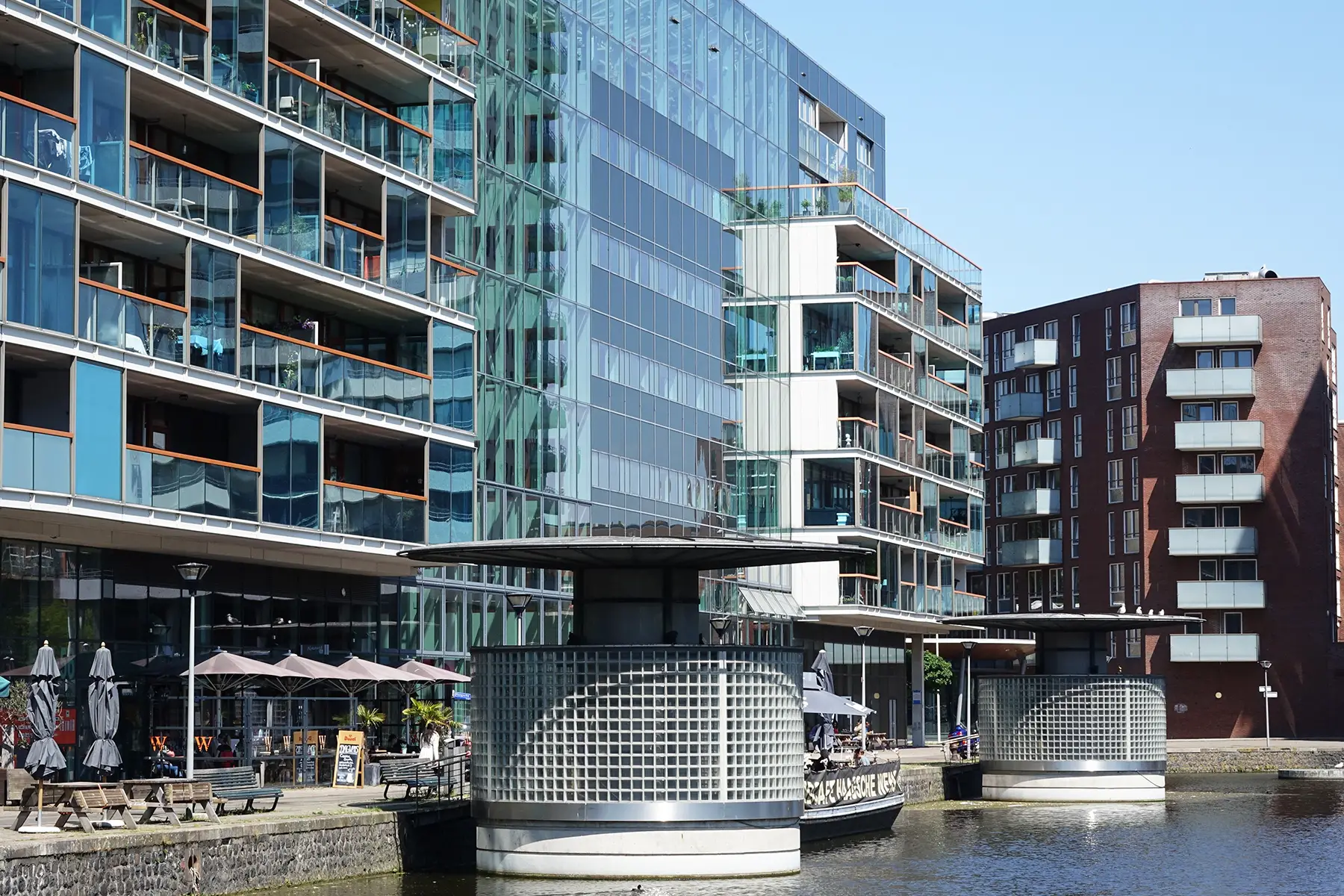
In the coming years, there’s set to be much development around Laakhaven, the inner harbor area of The Hague. This will include modern apartments, workspaces, and a marina.
Despite Laakkwartier’s industrial atmosphere, there are several local playgrounds in the area. You can also quickly reach beautiful parks in Rijswijk by bike or public transport.
Laakkwartier is known for its wide variety of affordable housing options, making it attractive for students, young professionals, and families who want to live close to the center.
Scheveningen
Scheveningen is a picturesque coastal neighborhood in The Hague located along the North Sea. Once a small fishing village, Scheveningen has evolved into a bustling seaside resort and an idyllic coastal haven.
The Scheveningen district consists of the Dorp (Village), Haven (Harbour), and Bad (Bath, or the seaside) areas. Scheveningen-Dorp, also known as Oude Scheveningen (Old Scheveningen), is a historic residential area where you’ll find Keizerstraat, the district’s oldest shopping street. Scheveningen-Haven is the center of the area’s fish trade, with a fishing port and an attractive marina lined with restaurants. Scheveningen-Bad features the district’s star attraction — Scheveningen Beach, which stretches about four and a half kilometers along the coast.
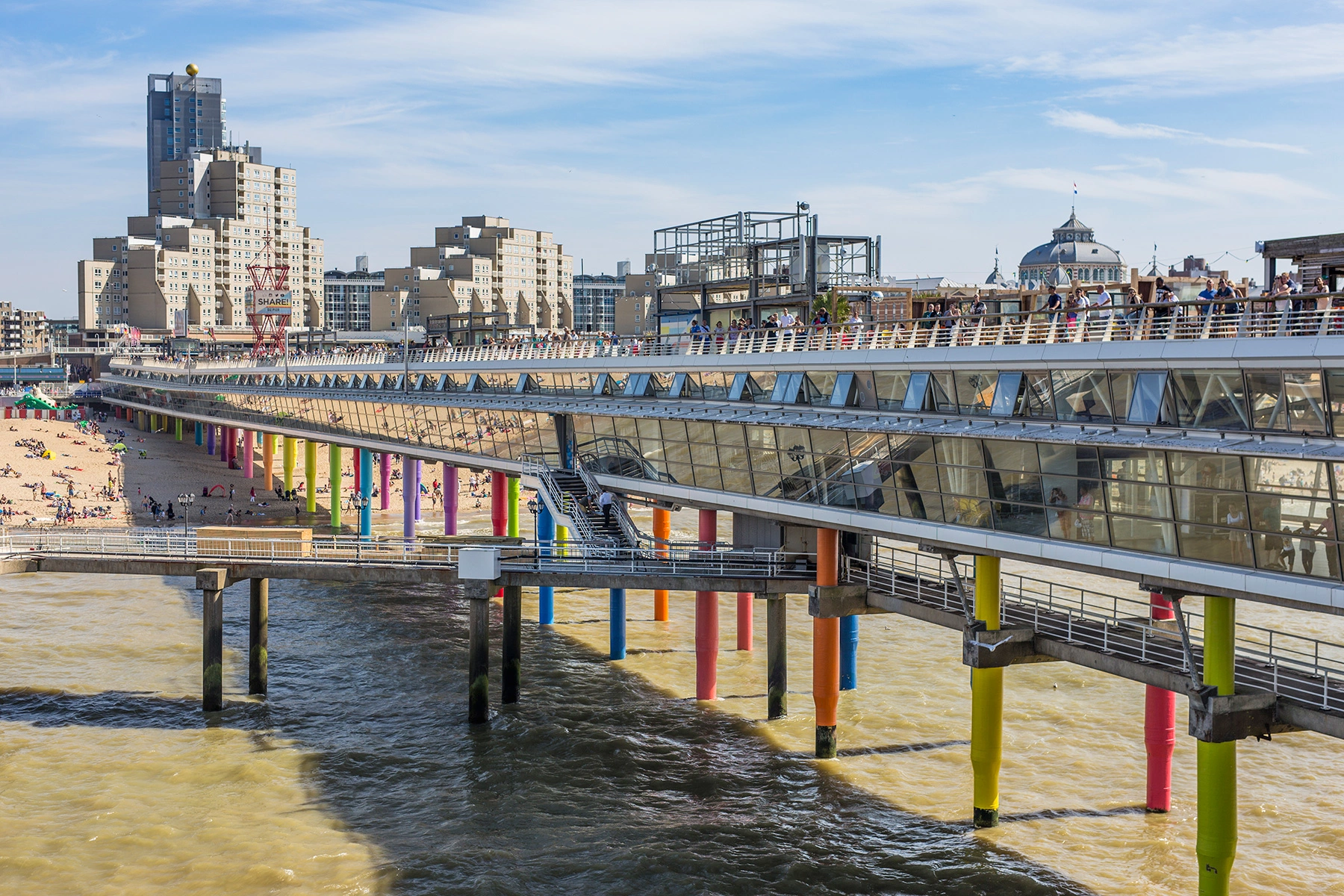
The beach is a hub of activity, with beach clubs, surf schools, and entertainment facilities all along Strandweg. Beyond the beach, Scheveningen boasts an array of attractions and amenities, including the AFAS Circustheater and the historic Grand Hotel Amrâth Kurhaus.
As well as being next to dunes and the beach, Scheveningen residents have easy access to many beautiful parks, including the Scheveningse Bosjes, Westbroekpark, and Hubertuspark.
Scheveningen is a great choice for beach lovers and families who want to live somewhere surrounded by nature. Despite its relative remoteness by the seaside, the city center is easily reachable by bicycle, car, and public transport.
Neighborhoods to avoid in The Hague
The Hague is considered a safe city in the Netherlands, with less crime than Amsterdam. According to the most recent Numbeo data, the crime rate in The Hague is “very low,” with a crime index score of 20.63 compared to 28.82 in Amsterdam. Certain neighborhoods, such as Schilderswijk and Laakkwartier, tend to attract a reputation for being less safe than other parts of the city. However, most locals and internationals happily live in the areas without incident.
Most crime in The Hague involves bicycle theft and pick-pocketing, so it’s good practice to be mindful of your belongings when traveling by public transport and walking around busy parts of the city center.
Tips on choosing a neighborhood in The Hague
With so many neighborhoods to choose from in The Hague, narrowing down your options can be overwhelming. Of course, the best area for you will depend on your lifestyle, budget, and priorities. Here are some tips to help you choose the right neighborhood:
- Research different areas as much as possible and connect with other internationals living there to learn about their experiences. A great way to do this is by joining Facebook groups such as Expats in The Hague. If you have children, you may want to join groups dedicated to parents, such as Parenting and The Hague and Den Haag Mamas. Furthermore, childcare providers such as Partou have several centers in The Hague.
- If possible, spend some time visiting different neighborhoods in The Hague in person. This allows you to get a feel for each location while familiarizing yourself with the area’s amenities and public transport options.
- Consider living in more suburban and residential areas in and around The Hague to find better deals for housing. Some popular places include Ypenburg, Leidschendam-Voorburg, Pijnacker-Nootdorp, Vruchtenbuurt, and Rijswijk.
Useful resources
- Gemeente Den Haag – the official website of the Municipality of The Hague
- The Hague tourism website
- The Hague International Centre
